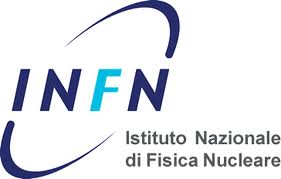BES3 Italian Collaboration
BESIII is an experiment running at the Beijing electron-positron collider (BEPCII), based at the IHEP laboratory of the Chinese Academy of Sciences.
The collider BEPCII is a multibunch machine (inter-bunch interval 8 ns) designed to operate in the total energy range 2-4.6 GeV in the laboratory center of mass, at design total beam currents of 910 mA for both beams. The expected luminosity of BEPCII, optimized at the one-beam energy of 1.89 GeV, is 1×1033cm-2s-1. Construction started in 2004 and commissioning went through 2 phases: in 2006, with the interaction region run on conventional magnets, and 2007, when superconducting quadrupoles were installed. During these periods the machine gave data-taking time to Synchrotron Radiation experiments.
Installation of the BESIII detector started in March 2008, and data taking followed on March 6 2009, with a scan of the ψ(2S) peak. During the next month, as machine commissioning continued, the peak luminosity of BEPCII increased steadily from 1.4 to 2.3×1032 cm-2s-1, with beam currents of 550 mA for both electrons and positrons, reaching a new record of 6×1032 cm-2s-1 in February 2011 with currents close to 700 mA.
During the 2016 data taking, the design luminosity of (1033 cm-2s-1) was finally reached, establishing a new luminosity record for accelerators in this energy range.
Link at the article: https://phys.org/news/2016-04-bepcii-luminosity-world-11033cm2s.html
BESIII is now steadily operating since 2009 and has collected the world's largest samples of J/ψ, ψ(2s) and ψ(3770). It has the unique opportunity to collect data directly in the region of the new XYZ states: this allows BESIII to have a major role in understanding the nature of these states. In 2013, the BESIII discovery of the charged charmonium-like states Zc(3900) has been recognized as Top Highlights of the Year by the APS journal.
Link at the article: http://physics.aps.org/articles/v6/139
More recently, the beam energy of BESIII has been upgraded up to 4.6 GeV, making possible the first direct measurement of the Λc baryon production at threshold.
Link at the article: http://bes3.ihep.ac.cn/news/2016LcEng_v7.html
The Italian groups have given significant contribution to many high profile analysis in BESIII and to the development of the distributed computing infrastructure of the collaboration.They are currently developing and building the new Inner Tracker for the BESIII detector, based on an innovative Cilindrical Gas Electron Multipliers (CGEM) technology, that it will be installed by the end of 2018.









